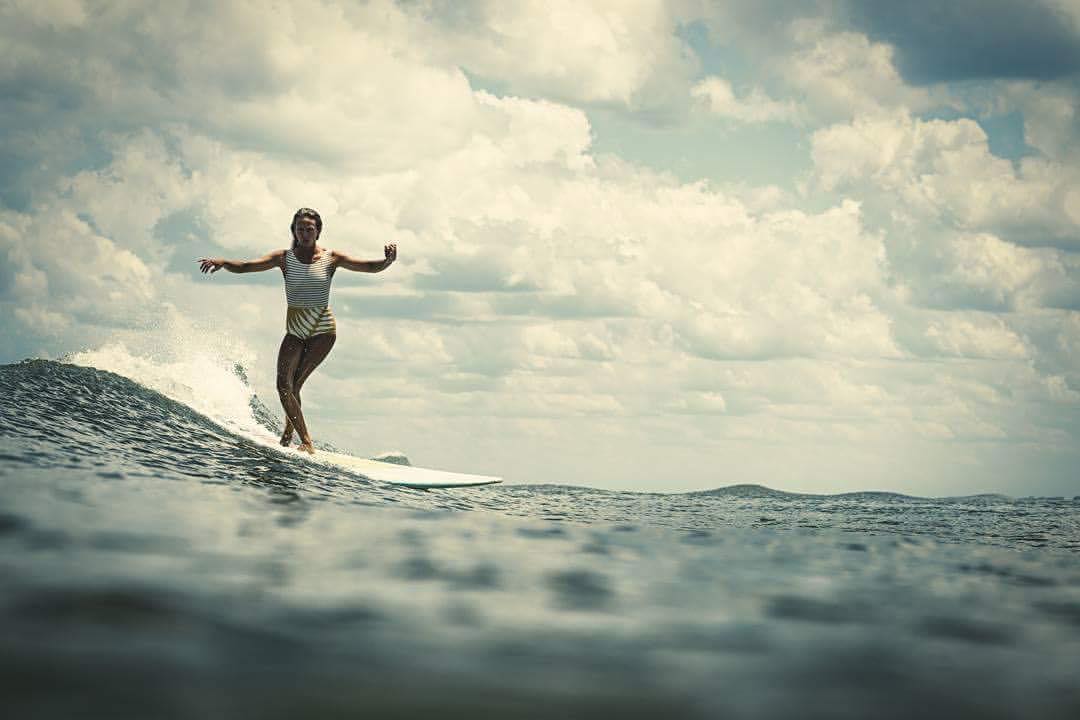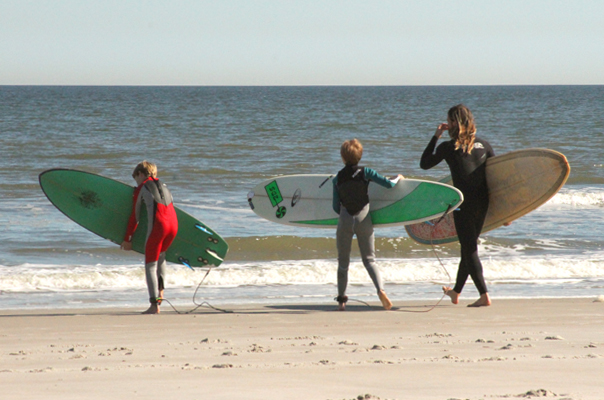
2016 is my ten year ‘Surfaversary’. What is a surfaverasary? Well it’s when you celebrate your relationship with surfing! I even gave myself a surfaversary present. I’ve spent my first decade pretty dedicated to longboarding, telling people who harass me about getting on a shorter board that I’ll move to a smaller board when I master my log. Then I follow that by explaining that I don’t think I’ll ever do such a thing as there is too much to learn and even when you think you have a decent grasp on it, the creativity you can bring into logging never ends. From lines to footwork, where you can go with your longboarding is limitless. Plus, I could talk all day about how beautiful, graceful, and timeless I think logging is.

All of that being said, three things happened over the last year that put a couple of fissures in my rock solid devotion to logging. The first was having some local girls come to Surf Camp, get super stoked on surfing and (mainly due to their stature and definitely NOT because longboarding isn’t the coolest thing around) promptly start riding short boards. Technically I suppose they’re mostly funshapes and midlengths, but still they’re all at least two feet shorter than anything I’ve ever tried to ride. Striving to be the best coach I can be, I wanted to be able to relate better to these girls and their experience in the water. It was easy to talk with them about looking for the peak and determining wave direction, but I couldn’t relate to their struggles with simply paddling into the wave. I would try to paddle with them in an attempt to set a paddling pace, but two strokes on my 9’2 and I was five yards ahead of them on their smaller boards. I started to paddle out on our 7 ft camp board in order to be closer in board size to the girls. And then, to my surprise, I started to have fun on it.

The second thing came about from that Surfaversary gift to surf with the lovely Leah Dawson in Puerto Rico. Leah spent most of her time on a singlefin shortboard, drawing the most beautiful lines and showing me that shortboarding doesn’t have to comply with what the surf media tells us it is. I thought of shortboarding as fast, tight turns with lots of ugly pumping in between sections. Leah showed me that with the right equipment, you can draw really smooth lines on shortboards and get just as creative with your surfing as you can on a longboard. As inspired as I was by Leah on her shortie, I came home and ordered a new, but very traditional longboard, still focused on improving my logging. I’m stoked on my new log, but I couldn’t help but keep thinking about the potential of a smaller board and all the days I could surf that aren’t conducive to longboarding (because we all know that I don’t surf enough already, right?!)

The third and final breakthrough was meeting Justin Laird. I met Justin, of Laird Surf Craft, in the water last year, right around the time that Surf Asylum Surf Camp decided to set up at Log Cabin, basically taking over the spot closest to his house (and shaping room). He was kind enough to let me try one of his displacement hull boards one time which piqued my curiosity about his shaping. I’d never ridden a hull and didn’t appreciate the differences between his longboard and mine until I paddled for a perfect wave, spun out on the take off and lost the board. What was this hull and how did it manage to toss me off on a glassy thigh-high peeler? Justin gave me a couple of pointers and I managed to hang on to a couple of speedy lines, but was more than happy to hand off the board, still trying to wrap my mind around how a board could be SO different than anything I’d ever ridden. Since that day we’ve always taken a few minutes to chat about waves and boards when we see each other out. I knew Justin was making his own boards and was really enthusiastic about the hulls, but recently I had noticed him and some other local surfers on other less traditional shapes, mainly fishes and weird, short, stubby looking things that he was making. That’s when it crossed my mind that Justin might be the guy to make my first shortboard. So I asked him if he was interested. Five minutes later we had a design plan.

A week later I was in his shaping bay, watching him bring my 6’6 Wayne Lynch inspired singlefin (You didn’t think I was going to get one of those potato chip thrusters did you?) to life. He told me before we got started that he believed in positive energy and vibrations and that he felt really good when he was cutting the initial outline of the board. I told him I believed in the same types of things and watched, mesmerized, as Justin took a barely recognizable chunk of foam and turned it into a functional piece of art. It’s apparent in each stroke of the planer and brush of the sandpaper that Justin is not only really talented, but genuinely loves shaping. He had a smile on his face the whole time, pleased with the harmony between his movements and the resulting shape of the foam. I had a smile on mine reveling in how cool it is when being in the right place with the right people and being open to new experiences can bring about great things.

Justin’s gonna put a cool acid splash on the bottom and the board should be ready for the water soon. Stay tuned for more as I try to chronicle my attempts at learning to ride a (MUCH) smaller board. Deepest thanks to my students and Leah Dawson for the inspiration, to Justin for being genuinely excited to make this board and putting some heart and soul into it, and last, but never least to David for always encouraging and supporting me, wherever surfing take us.





